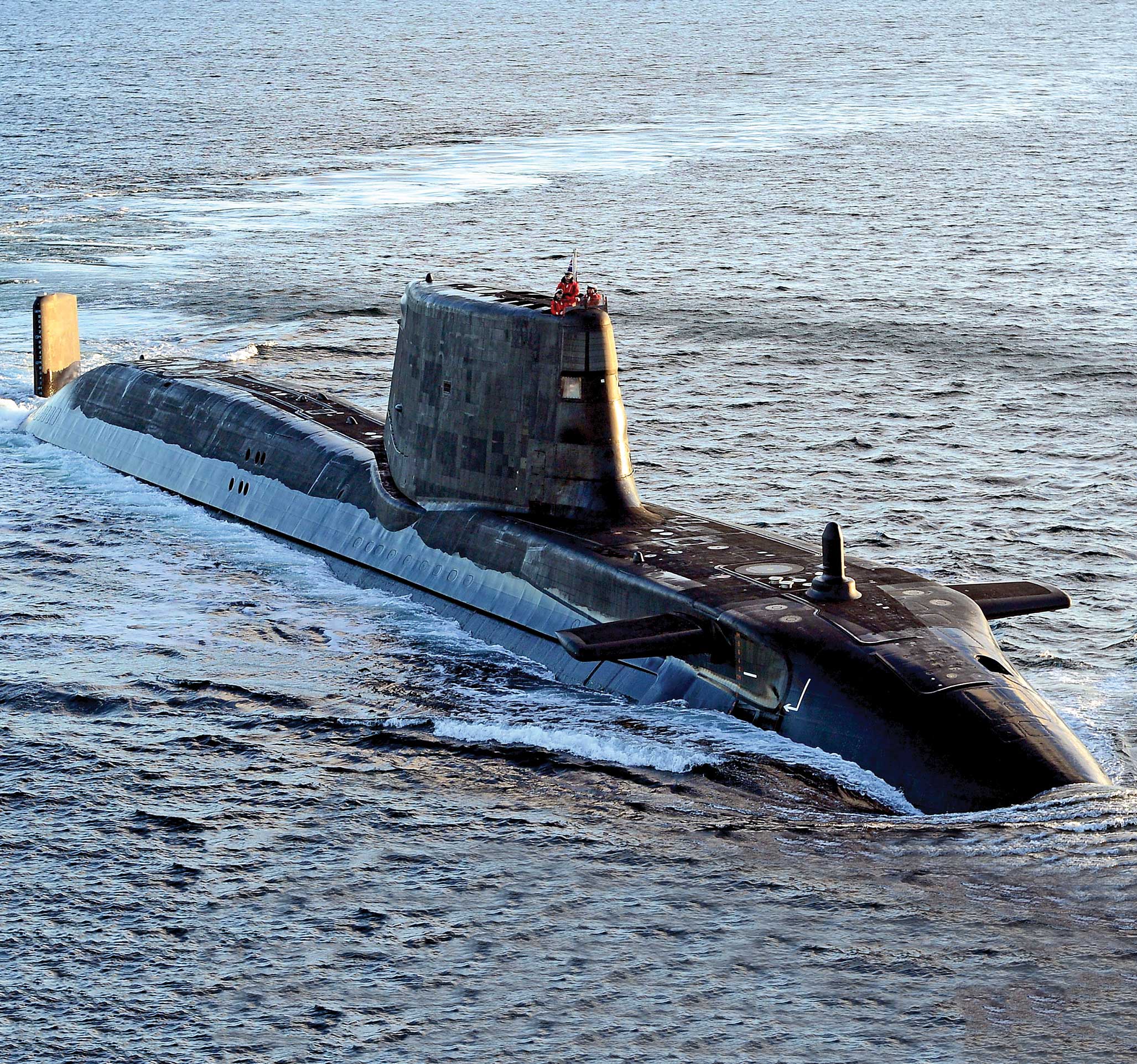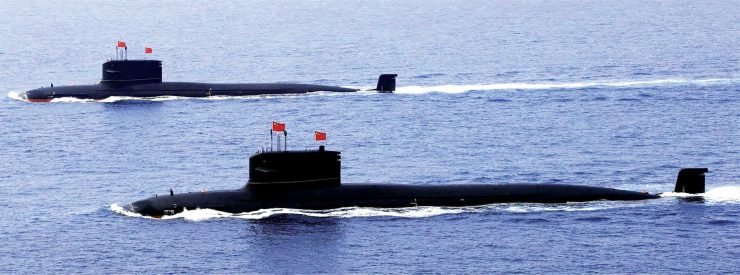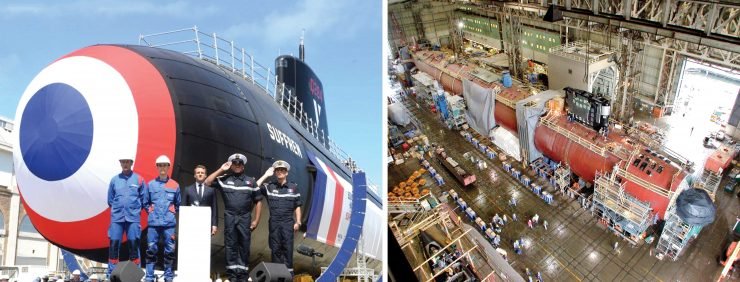
The historical progression of submarines in the world has traversed from conventionally propelled diesel electric boats, which run underwater on batteries and need to surface (for air) for charging batteries, to the era of nuclear propelled submarines led by USS Nautilus in 1954. A submarine on surface is perforce susceptible to detection and attacked from ships and the air.
Since long, Air Independent Propulsion (AIP) systems are fitted in conventional submarines to stay underwater for longer durations. Nuclear submarines can operate underwater for months, and their endurance is limited by the crew’s endurance. US nuclear submarines have two crews for year-long operations on patrol.
 The Indian Navy was a late starter to induct its first Foxtrot class conventional submarine INS Kalvari (S23) with CET/TEST torpedoes with forward and aft torpedo tubes in 1968 from the Soviet Union. This was good five years after Pakistan got a Tench class submarine PNS Ghazi (USS Diablo) from US on lease in 1963, which took part in the 1965 Indo-Pak war.
The Indian Navy was a late starter to induct its first Foxtrot class conventional submarine INS Kalvari (S23) with CET/TEST torpedoes with forward and aft torpedo tubes in 1968 from the Soviet Union. This was good five years after Pakistan got a Tench class submarine PNS Ghazi (USS Diablo) from US on lease in 1963, which took part in the 1965 Indo-Pak war.
But, Today India operates both classes viz. 15 conventional submarines (Nine Kilos, four HDW-1400 and two Scorpenes) with torpedoes (SET and SUT-B) and ship attack missiles (KLUB, Exocet SM-39 and Harpoons), and two nuclear submarines. In submarines, torpedoes and missiles are launched from standard 21 inch torpedo tubes world over.
Nuclear submarines have two standard hull classifications – one is called a SSN which is a nuclear propelled attack submarine like the two Indian Navy operated INS Chakra with torpedoes and missiles which were on lease from Russia, and other is called SSBN which is a nuclear propelled submarine equipped with torpedoes and vertical launch long range nuclear ballistic missiles. The home built INS Arihant (S2) is an SSBN which has 750 km K-5/B-05 nuclear tipped missiles, and is part of India’s Triad for nuclear deterrence. India’s second SSBN Arighat (S3) and the third S4 (yet to be named) are in advanced stage of construction with long range K-4 nuclear missiles at Vishakhapatnam.

In February 2015, the Defence Acquisition Council (DAC) under the Ministry of Defence (MoD) approved the construction of six new nuclear powered attack submarines (SSNs) for the Indian Navy. The estimated cost of the project is pegged at 1.2 lakh crores (US$5 billion).
It is anticipated the design would be as for a modern SSN and the construction would be on lines similar to that of the INS Arihant with an improved Bhabha Atomic Research Centre (BARC) designed nuclear reactor at Defence Research and Development Organisation’s (DRDO) Ship Building Centre (SBC) in Vishakhapatnam under the Advanced Technology Project (ATV) under a strategic Public Private Partnership (PPP). The project is being worked out under a Naval Vice Admiral. Larsen & Toubro (L&T) is the PPP construction partner for INS Arihant and successive submarines.
For the Arihant, Rubin vetted the modifications made to the design by the Navy’s in-house Directorate of Naval Design and L&T. Both organizations have since become more adept in designing with advanced software and virtual design centres. Since the Indian Navy is a traditional user of Russian nuclear submarines (with two INS Chakra on lease), the new domestically built submarines would be the third class of SSNs operated by Indian Navy after the leased Charlie I (1987-91) and currently operates Akula II-class submarine. Both were named INS Chakra. L&T is the choice for the DRDO unless India chooses Naval Group which it is reported offering the Barracuda class.
In June 2019, a report stated that Submarine Design Group of the Directorate of Naval Design assisted by DRDO will now start working on the detailed design for construction phase of the six SSN programme, and Rs 100 crore (US$14 million) have been allocated for the initial phase. The development has begun. Mishra Dhatu Nigam (MIDHANI) is developing a new hull material that is expected to allow the submarine to dive into deeper depths than the Arihant class. A scaled down model of the submarine is planned to be tested in the near future.

It is also reported that during President Putin’s visit in 2018 for the 19th India-Russia bilateral annual summit, India signed an Inter-governmental Agreement (IGA) with Russia to lease another Akula-Class attack nuclear submarine (SSN). This Akula class SSN to join the Indian Navy in 2025 after a major refit of the hull in Russia’s Arctic port of Severodvinsk when INS Chakra (Bars 971) will be due for a change of uranium fuel.
India is the only country in the world to have operated a nuclear submarine on loan from a nuclear-weapon state, and Russia is the only such state to have leased one. Moscow has also been a critical supporter in New Delhi’s indigenous nuclear submarine programme. The history of their cooperation on nuclear submarines is, however, shrouded in secrecy.
–The author is former DNI and DNO. His latest Novel ‘An Underhand Affair’ (Addhyan ISBN 9789388644167 Variety Books) includes intrigues in the world of Naval Intelligence









